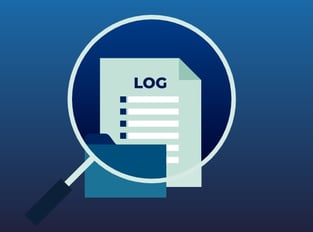Introduction
Imagine waking up to find your organization under attack, but with no logs to trace back the actions of the intruder. That’s a nightmare for any cybersecurity professional. Comprehensive logging isn't just a best practice—it's a critical necessity in today’s threat landscape. In this blog, we'll explore the importance of logging and how it aligns with compliance standards.
Abstract
Overview
Comprehensive logging involves capturing detailed records about user activity, system changes, and security events. These logs play a vital role in detecting, investigating, and mitigating security incidents. Additionally, they help ensure compliance with various regulatory standards that mandate audit trails.
In the fast-paced world of cybersecurity, comprehensive logging is your safety net. Without clear, actionable records, pinpointing the source of a security incident is like looking for a needle in a haystack. This blog will delve into why comprehensive logging is not only essential for compliance but also for strengthening your organization's overall security posture.


[Disclaimer: This blog post is for informational purposes only and should not be construed as legal or financial advice. Organizations should consult with legal counsel and regulatory authorities to ensure compliance with reporting requirements.]
Mandatory
For organizations to meet compliance standards (such as GDPR or HIPAA), they must maintain detailed logs that track user access, actions, and any potential security events. This isn’t optional—it’s required for avoiding penalties and ensuring security transparency.
Applicability
Comprehensive logging applies to every organization handling sensitive data, especially those in industries like finance, healthcare, and government. From user login timestamps to data access, maintaining these logs is mandatory for transparency and accountability.
Regulatory or Company Interest?
Logging is critical for meeting regulatory obligations and maintaining security best practices. A breach without logs could be catastrophic—not only legally but also for the trust your customers place in you.
Key Guidelines
Implement real-time logging, retain logs for a minimum of 6 months, and ensure logs are tamper-proof and secure. Regularly audit logs to spot anomalies that could indicate potential threats or breaches.


Key Implications
Inadequate logging can lead to severe consequences, such as failure to comply with regulations, loss of audit trail data, or an inability to respond to incidents swiftly. It may also result in regulatory fines or reputational damage.
Countries with Adoption or Influence
Countries like the U.S., the U.K., and EU nations have clear regulations requiring comprehensive logging for compliance. Whether under GDPR, HIPAA, or other local standards, businesses in these regions must follow strict logging practices.
International Frameworks Influenced
Global standards like ISO 27001 and NIST emphasize the need for comprehensive logging as part of an overall information security management system. They set guidelines on how logs should be maintained, secured, and analyzed.
Regional and Industry-Specific Frameworks
For industries like healthcare (HIPAA) and finance (PCI-DSS), GDPR's influence has been seen in tightening data protection measures.
Secure Your Digital Identity with SecureKnots
Contact us to learn more about our cybersecurity services and ensure your organization meets cybersecurity requirements.


Conclusion
Comprehensive logging is more than just a technical requirement—it’s a pillar of your organization's security strategy. By adhering to logging best practices, you safeguard your systems, meet compliance, and stay ahead of potential cyber threats.
How SecureKnots Can Help
At SecureKnots, we offer services like VAPT (Vulnerability Assessment and Penetration Testing) and Security Awareness Trainings to ensure your logging practices align with the highest standards. Our internal and external audits and certifications guarantee that your systems are compliant and ready to detect any suspicious activity. We help your organization implement robust logging solutions, enabling quick identification and mitigation of security risks. With our expertise in ransomware attack simulations and phishing simulations, we equip your team with the skills and knowledge to respond to security incidents effectively.
This blog focuses on the importance of securing employee access to internal systems while showcasing how SecureKnots can help organizations strengthen their access controls. It is informative and engaging, highlighting the significance of Comprehensive Logging Let me know if you need further adjustments!
Thank you for your attention! If you have any inquiries about cybersecurity requirements or need expert guidance, please don't hesitate to contact SecureKnots.
This should wrap up the blog and fulfill the promise made in the previous one!
Comprehensive Logging
Imagine not being able to trace the cause of a security incident because there were no logs! Comprehensive logging is a crucial part of compliance. It involves keeping detailed records of who accessed what and when, so you can track any suspicious activity and ensure compliance with regulatory standards.
WITH OUR SHORT BLOGS
STAY UP TO DATE
Copy Rights @ 2023 SecureKnots. All Rights Reserved.
CONTACT US
Contact@Secureknots.com
USA
+1-302-601-2346
+1-302-608-6708
INDIA
080-31658865
GET IN TOUCH
